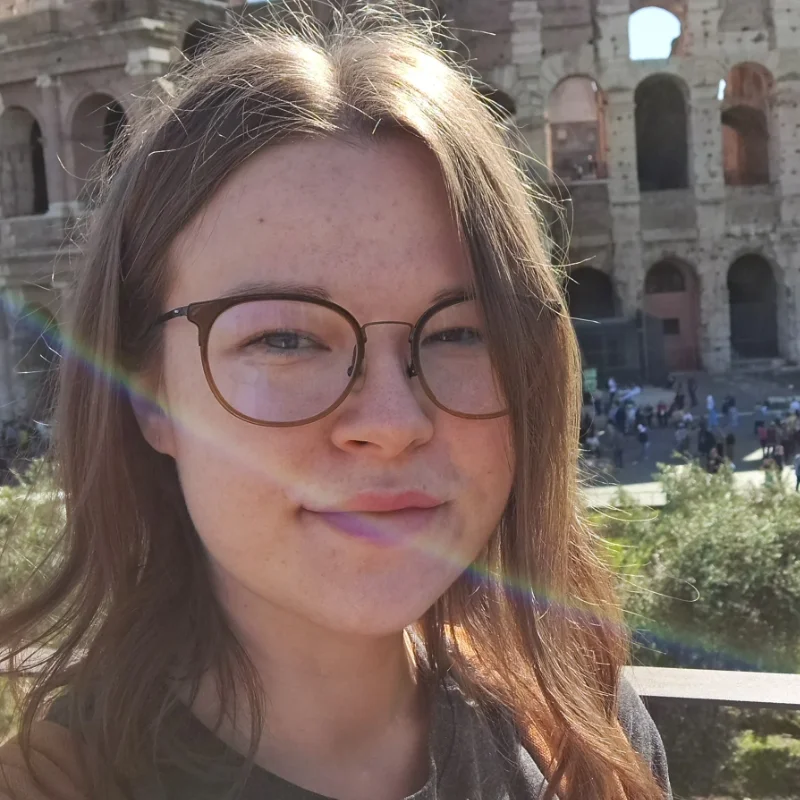Laboratory of Neural Circuit Optophysiology
In vivo high-resolution optical imaging brings new unprecedented options how to study mammalian brain under physiological and pathophysiological conditions. We combine fast intravital optophysiological techniques and molecular biology to investigate the precise neural circuit mechanisms underlying seizure initiation and propagation. Using chronic cranial window preparation in mice, we are able to observe long-term dynamics of defined neuronal populations in the context of epileptogenesis and ictogenesis. Using ultrafast one-photon DMD microscopy, two-photon compressive microscopy and two-photon/three-photon fast raster-scan microscopy, we are able to measure activity of individual neurons with millisecond precision and/or record their activity and precise subcellular morphology with a depth limit of 1.5 mm in the intact awake brain.
By employing our state-of-the-art optophysiological hardware we aim to describe the role of defined local neuronal populations in neocortical seizures, with emphasis on different interneuronal subtypes. Furthermore, we aim to test the previously postulated hypotheses suggesting possible subtype-specific roles of local interneuronal populations in focal cortical seizures, high-frequency oscillations and ictogenicity of cortical malformations in an in vivo setting in order to find targets for intervention. We further focus on microenvironment of the brain malformations, chronic sterile inflammation and senescence of the mutated neurons. As a side research branch, we collaborate on a study of the complex dynamics of glioblastoma development and pathology. Using our chronic cranial window preparation, we are testing a promising therapeutic approach based on nanoparticle-mediated intervention.

Ondrej Novak, MSc, PhD
Team Leader

Monika Rehorova, MSc, PhD
Post-doctoral fellow

Natalie Prochazkova, MSc
PhD student

Jana Thao Rozlivkova, MSc
PhD student

Jana Populova, MSc
PhD student

Niki Shariati, MD
Medical Doctor

Jan Danek, MRes
PhD student, researcher

Carl VL Olson, BSc, BMus
Junior Researcher

Paulina Zidekova, Bc
Student

Pavlina Cabounova
Student
Research areas
Overview
The general goal of the group is to help patients, typically children with pharmacoresistant epilepsy caused by cortical malformations. Therefore, we aim to investigate and get to know the mechanisms of the disease, and to develop new method(s) that would ameliorate its progression toward a possible full recovery of the patient.
- We have adopted and further modified the methodology of a mouse model of focal cortical dysplasia type II (FCDII) (Natálie Procházková, Monika Řehořová, and others).
- In the FCDII model, in collaboration with other laboratories at the institute, we characterized the high-frequency activity of neural tissue in and around the lesion (Natálie Procházková, Jan Chvojka from the Kudláček Lab, and others; DOI:10.1016/j.nbd.2023.106383).
- At the level of individual excitatory neurons, dysmorphic neurons, and inhibitory neurons, we have studied morphological and functional changes in FCD during epileptogenesis (Monika Řehořová; publication in preparation).
- We have showed that dysmorphic neurons in FCDII have a different activity profile as compared to pyramidal cells in non-FCD mice—they burst more, reach a higher maximum frequency of action potentials, and have a lower average spontaneous activity (Jana Thao Nguyenová; publication in preparation).
- We have shown that in a fraction of spontaneous epileptic seizures, dysmorphic neurons in FCDII activate and synchronize earlier than the rest of the neurons. Whether this is in a causal role or just a correlation in the focus of our ongoing studies. However, if causal, this would clearly point to dysmorphic neurons in FCD as a major therapeutic target. The amount of data is currently being expanded due to the large variability of seizures (Monika Řehořová, Pavlína Čabounová)
- We found that different subtypes of inhibitory interneurons probably play specific roles in cortical seizures and in the process of spreading depolarization. For example, parvalbumin-positive interneurons, neurons that send inhibitory synapses to the body of surrounding neurons, still have high intracellular calcium concentrations many seconds after seizure termination compared to other cells. This could point to their specific role in seizure termination, a mechanism that remains unclear. Data are now being collected in an acute experiment, where the calcium dynamics of these inhibitory cells at the end of the seizure are monitored, along with their voltage activity in complementary experiments. Knowing the specific type of neurons involved will allow us to better target them (Jana Populová, beginning of the project).
- One of the new goals is also to create an alternative and faster “FCD” model. In this case, mice cortices exposed to dysmorphic neurons induced in adulthood. FCDII is generally caused by somatic mutations in the PI3K/AKT/mTOR signaling pathway. One of the published activating mutations is in a small regulatory GTPase called RHEB. Its genetic information can be packaged into an adeno-associated virus and transfected into cortical neurons of the adult mouse without epilepsy. It has previously been shown that in a mouse model where they used in utero electroporation, but activated the mutated gene in adulthood, seizures developed. Thus, seizures were not dependent on the disorganization and dislamination of the cortex, but rather on the presence of neurons carrying the mutation. We aim to achieve this situation by introducing the mutation into the neurons of the adult mouse, where we hypothesize that such a mouse will also develop epilepsy. This model has the theoretical advantage of up to 5x higher yield when compared to electroporation, the ability to target the lesion to specific parts of the mouse cortex, and the ability to adjust the fraction of mutant neurons. Such a model can not only be used to elucidate the position of the lesion and its density on the measure of epileptogenicity, but also can be used as a simpler model for drug screening by pharmaceutical companies. (Carl VL Olson, model development and testing, early phase).
- Based on the literature and much of our preliminary data, we have shown that dysmorphic mutant FCDII cells exhibit the hallmark of senescent cells. These are cells where there is irreparable DNA damage, accumulation of DNA breaks, and activation of the pro-inflammatory secretome. These cells have activated the initial steps of the apoptotic pathway, but are blocked by their own increased expression of apoptosis blockers (BCL2 family of proteins). Our goal is to use agents (called senolytics) that are able to block these apoptosis blockers and thus selectively eradicate dysmorphic neurons in the tissue. To this end, we are using an advanced preparation of the FCDII mouse: surgery with a cranial window, a video EEG connector, and a chronic cannula going directly into the brain parenchyma at the site of the FCD. Senolytics will be delivered to the surrounding dysmorphic neurons by a chronic subcutaneous osmotic pump connected to the cannula. Through the cranial window and intravital two-photon microscopy, we can monitor how and whether individual dysmorphic neurons go into apoptosis. We will then observe on the video EEG unit whether epileptic seizures disappear. (Ondřej Novák, AZV grant project at initial stages).
- We are part of a collaboration with Dr. Kudová’s laboratory at the Institute of Organic Chemistry and Biochemistry of the Czech Academy of Sciences where we are testing the effect of newly synthesized neuroactive steroids on brain excitability and its transition to seizures in acute and chronic epileptic models. Specifically, we are using two-photon microscopy to study which neurons and mechanisms are most affected by neurosteroids (Jan Daněk, project at early stage).
- Occasionally, instead of buying our laboratory devices, we will make or improve them for our use purposes, which can yield better results when compared to commercially available alternatives. We have developed our own electroporator where we have incorporated analogue current limitation for embryo protection and prevention of complete abortions. We designed the device so that it could be constructed in a few days with only basic soldering knowledge and a 3D printer. We have published the design, a comprehensive verification of the efficacy in experiment, and instructions for assembly. (Jana Thao Nguyenová, Natálie Procházková, Ondřej Novák; DOI:10.1016/j.jneumeth.2024.110126).
Selected publications
Abdelfattah AS et al
Bright and photostable chemigenetic indicators for extended in vivo voltage imaging
Science 2019
Abdelfattah AS et al
Sensitivity optimization of a rhodopsin-based fluorescent voltage indicator
Neuron 2023
Kazemipour A et al
Kilohertz frame-rate two-photon tomography
Nature Methods 2019
Johnston S et al
AAV Ablates Neurogenesis in the Adult Murine Hippocampus
eLife 2021
Marvin JS et al
A genetically encoded fluorescent sensor for in vivo imaging of GABA
Nature Methods 2019
Procházková N et al
NeuroPorator: An open-source, current-limited electroporator for safe in utero gene transfer
Journal of Neuroscience Methods 2024
Current grant projects
Senescence of neurons in mutated mTOR-related focal cortical dysplasia – from the cell mechanisms for targeted treatment
Czech Health Research Agency
Ondřej Novák (Second Faculty of Medicine, Charles University)
05/2024 – 12/2027
National Institute for Neurological Research
Ministry of Education and Culture – Exceles Program
Milan Brázdil (FNUSA)
07/2022 – 12/2025
University Center for Research on Disorders of Neuronal Excitability (EXCITE)
Charles University – UNCE Program
Přemysl Jiruška (Second Faculty of Medicine, Charles University)
2023-2027
IPE (Institutional Support of Excellence)
Second Faculty of Medicine, Charles University
Study of the role of individual neuron types in the pathophysiology of focal epileptiform activity using the voltage imaging method
Charles University Grant Agency (GA UK)
Minh-Thao Nguyenová (Second Faculty of Medicine, Charles University)
2022-2024
International cooperation
Carsen Stringer
Janelia Research Campus, HHMI, Ashburn, USA
Collaboration focused on the building of new wide-field cell-resolving microscope for cortex-wide fast imaging with cellular resolution
Collaboration on advanced big data processing
Eric Schreiter
Janelia Research Campus, HHMI, Ashburn, USA
Collaboration and technical support in the field of genetically-encoded voltage indicators.
We help Eric and his team to benchmark optimized rhodopsin-based genetically-encoded voltage indicators.
Tomas Cizmar
Leibniz Institute of Photonic Technology, Jena, Germany
Collaboration on the optical design for deep structure in vivo imaging
We performed first of the kind single-cell voltage imaging through 110um-thick multimode fiber
Matthew Shtrahman
University of California San Diego, La Jolla, USA
Collaboration on the data processing and software design
Keywords
Seizure genesis and propagation in vivo on single-cell and cell type-specific level; Focal cortical dysplasia structure, malfunction and microenvironment; Causal epilepsy therapy